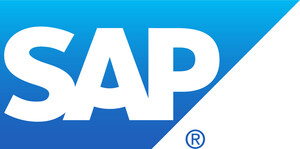WALLDORF, Germany, Aug. 16, 2016 /PRNewswire/ -- Companies deploying SAP® Jam Collaboration demonstrated an increased return on investment (ROI) through faster access to information, decreased employee training costs and reduced time spent on closing deals, according to a study commissioned by SAP SE (NYSE: SAP).
The July 2016 study, conducted by Forrester Consulting on SAP's behalf, calculated the total economic impact (TEI) of SAP Jam through a combination of qualitative and financial analyses from a portion of SAP's customer base. The study found that the enterprises using SAP Jam reported a combined net present value (NPV) of more than 19 million dollars and an ROI increase of 11 percent from a previous study in 2015. The results speak to the possible transformations and long-term financial benefits business enterprises using SAP Jam could experience.
SAP Jam can help businesses through social collaboration rooted in business value, by providing a centralized, cloud-based platform that can help make it easier to find and share information, reduce the time it takes for sales to close deals, improve the speed of onboarding new employees and cut the response time of support organizations.
"Growing evidence points to a road to measuring collaboration success," wrote Art Schoeller, vice president and principal analyst, Forrester, in the March 2016 report "Define Business Value in Collaboration." "Sales, customer service and the supply chain are initial areas where collaboration adds measurable business value. Once organizations achieve success in one or more of these roles, they seek out broad adoption to build on this early success."
The study points to several strategic areas where SAP Jam can add business value, specifically:
Faster access to information and expertise. On average, employees using SAP Jam were 15 percent more efficient at locating information and expertise. The collaboration platform decreased the number of hours per week spent e-mailing, searching for information and awaiting responses.
Reduced costs and time to train and onboard new employees through co-creation of training content and less travel. SAP Jam helped reduce the time and expense to train new employees. It provides a community where new hires can work together on onboarding activities and receive support from experts in other departments. It also enabled organizations to eliminate travel for training by providing a platform to enhance virtual learning opportunities.
A reduction in time to close deals. The average time required to close a deal decreased by 9 percent, shaving off about 10 hours from every deal put together by a team.
A reduction in licenses for redundant or poorly adopted collaboration software. Because individual areas of the organizations studied invested in point-product collaboration tools, the use of SAP Jam reduced the overlap in those licenses by 20 percent.
"It's clear that customers are willing to invest in collaboration technology that can help increase ROI," said Daisy Hernandez, global VP of Product Management, Enterprise Collaboration at SAP. "As our customers look to digitally transform their businesses, we will continue to support them by building meaningful business applications that reflect how people want to work and how customers want to engage."
For more information, visit www.sap.com/jamcollaboration and www.sap.com/jamcommunities.
For more information on SAP, visit the SAP News Center. Follow SAP on Twitter at @sapnews.
Media Contact:
Fiona Ashby, +44 (0)7775 011 910, [email protected], GMT+1
Any statements contained in this document that are not historical facts are forward-looking statements as defined in the U.S. Private Securities Litigation Reform Act of 1995. Words such as "anticipate," "believe," "estimate," "expect," "forecast," "intend," "may," "plan," "project," "predict," "should" and "will" and similar expressions as they relate to SAP are intended to identify such forward-looking statements. SAP undertakes no obligation to publicly update or revise any forward-looking statements. All forward-looking statements are subject to various risks and uncertainties that could cause actual results to differ materially from expectations. The factors that could affect SAP's future financial results are discussed more fully in SAP's filings with the U.S. Securities and Exchange Commission ("SEC"), including SAP's most recent Annual Report on Form 20-F filed with the SEC. Readers are cautioned not to place undue reliance on these forward-looking statements, which speak only as of their dates.
Logo - http://photos.prnewswire.com/prnh/20110126/AQ34470LOGO
SOURCE SAP SE
Related Links
WANT YOUR COMPANY'S NEWS FEATURED ON PRNEWSWIRE.COM?
Newsrooms &
Influencers
Digital Media
Outlets
Journalists
Opted In




Share this article